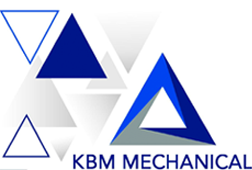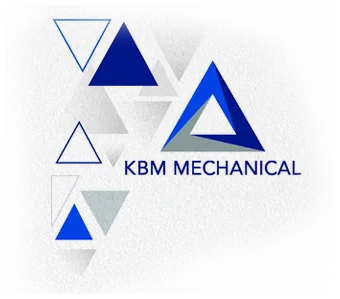A reliable power source is essential for any home, especially during unexpected outages. While many homeowners consider installing a generator to safeguard their power supply, the importance of professional installation cannot be overstated. Ensuring that your generator is installed correctly protects your home from potential hazards and guarantees that your power needs are met efficiently and safely.
During a professional installation, experienced technicians assess your home’s specific requirements, select the optimal location for the generator, and comply with local regulations. These steps are critical to preventing issues such as electrical malfunctions, carbon monoxide leaks, and generator damage. By hiring experts, you can have peace of mind knowing that your generator will operate smoothly and effectively whenever it’s needed.
Understanding the Different Types of Generators
Generators come in various types, each designed to meet specific needs and applications. The two main categories are standby generators and portable generators.
Standby Generators
Standby generators are permanent fixtures installed at your home or business. They are connected directly to your electrical system and automatically kick in when a power outage occurs. These generators are typically powered by natural gas or propane. Standby generators are ideal for providing uninterrupted power to critical systems, such as heating, cooling, and security.
Portable Generators
Portable generators, on the other hand, are movable units that can be transported and used in various locations. They are usually powered by gasoline or diesel and need to be manually started and connected to appliances. Portable generators are suitable for temporary power needs, such as during camping trips or short-term power outages.
Pros and Cons of Each Type
Standby generators offer convenience and reliability but come with higher installation and maintenance costs. They provide seamless power transition during outages and can power entire homes or businesses. Portable generators are more affordable and flexible but require manual setup and offer limited power supply. They are best suited for specific, short-term electricity needs rather than long-term solutions.
Factors to Consider Before Installation
When planning generator installation, several key factors must be taken into account to ensure an effective and safe setup.
Assessing Your Power Needs
The first step is to determine your power requirements. List the essential appliances and systems that need to remain operational during a power outage. Calculate their total wattage to identify the generator capacity you’ll need. This will help you choose a generator that can handle your power load without overloading or underperforming.
Choosing the Right Location for Your Generator
Proper placement is crucial for the efficient performance and safety of your generator. The generator should be installed in a well-ventilated area to prevent overheating and allow exhaust gases to disperse safely. It should be easily accessible for maintenance yet far enough from living areas to minimize noise disturbance. Follow manufacturer guidelines on distance from windows, doors, and vents to avoid potential hazards.
Understanding Local Regulations and Permits
Installing a generator involves adhering to local building codes and regulations. Check the requirements in your area to ensure compliance with zoning laws, noise ordinances, and installation standards. Obtaining the necessary permits before installation is vital to avoid legal complications and ensure safety. Our professionals are well-versed in local codes and take care of these aspects during the installation process.
The Installation Process: What to Expect
Installing a generator is a complex process that requires careful planning and execution. Understanding the steps involved can help you anticipate what to expect and prepare accordingly.
Preparatory Steps Taken by Our Professionals
Our technicians start with a thorough assessment of your property. They identify the best location for the generator, considering factors like ventilation, accessibility, and distance from living areas. Once the site is chosen, they secure the necessary permits and ensure all local codes are met. This meticulous planning sets the foundation for a smooth installation.
Step-by-Step Breakdown of the Installation
- Site Preparation: The designated area is cleared and leveled. A concrete pad or gravel bed is installed to provide a stable base for the generator.
- Positioning the Generator: The generator is carefully positioned on the prepared site and anchored to prevent movement.
- Connecting Fuel Lines: Our technicians connect the generator to the fuel source, whether it’s natural gas, propane, or diesel.
- Electrical Connections: The generator is wired into your home’s electrical system, ensuring a seamless transition of power in case of an outage.
- System Integration: Transfer switches and control panels are installed to manage the power flow between the generator and your utility service.
Post-Installation Testing and Safety Checks
After installation, our professionals conduct a series of tests to ensure everything is functioning correctly. This includes running the generator to check its performance, verifying fuel flow, and confirming proper electrical connections. Safety checks are performed to ensure there are no hazards, and the installation complies with all regulations.
Maintaining Your Generator Post-Installation
Proper maintenance is crucial to ensure your generator remains reliable and operational when you need it most. Regular upkeep can prevent breakdowns and extend the life of your equipment.
Regular Maintenance Tips
- Routine Inspections: Regularly inspect your generator for signs of wear and tear, such as loose connections or corroded parts.
- Oil and Filter Changes: Just like a car, your generator needs regular oil and filter changes to run smoothly. Follow the manufacturer’s recommendations for the frequency of these changes.
- Battery Check: Ensure the generator’s battery is charged and in good condition. A weak battery can hinder performance.
- Coolant Level: Check and maintain the coolant levels to prevent overheating.
- Cleaning: Keep the generator clean and free from debris to ensure proper ventilation and performance.
Signs Your Generator Needs Professional Attention
It’s important to recognize when your generator needs professional care. Watch for the following signs:
- Unusual noises or vibrations during operation
- Frequent or unexplained shutdowns
- Visible signs of damage or corrosion
- Difficulty starting the generator
- Erratic power output
Helpful Resources for Ongoing Generator Care
Refer to the owner’s manual for specific maintenance guidelines and troubleshooting tips. Additionally, our team is always available to provide expert advice and support for your generator maintenance needs.
Conclusion
Ensuring a smooth and effective generator installation involves careful planning, adherence to local regulations, and professional execution. Proper sizing, placement, and regular maintenance are crucial steps in maintaining a reliable power supply. By avoiding common installation mistakes and following best practices, you can extend the life of your generator and ensure it performs when you need it most.
Don’t let unexpected power outages disrupt your life. Contact our professionals at KBM Mechanical for expert generator installation in Crawfordsville and enjoy a seamless power supply for your home or business!

